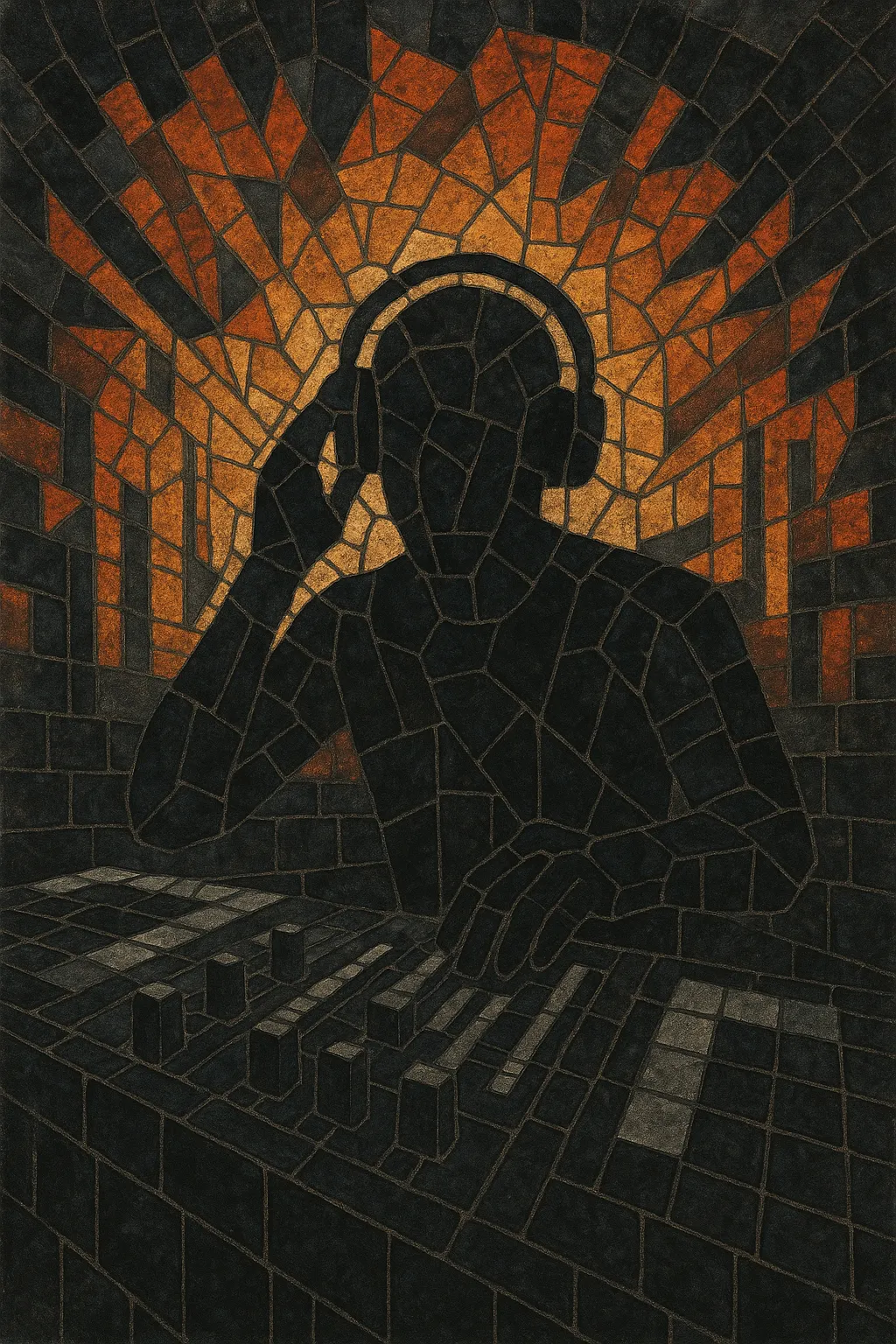Electronic Body Music (EBM) is a hard-edged, dance‑oriented form of electronic music that fuses the mechanical textures of industrial with the propulsive simplicity of club rhythms. It is characterized by rigid 4/4 beats, sequenced and heavily compressed basslines, clipped synth stabs, and shouted, often slogan‑like vocals.
Classic EBM favors minimal harmonic content and a stark, machine‑age aesthetic. Songs typically sit around 110–125 BPM, emphasize physical movement (the “body” in EBM), and use analog drum machines, step‑sequenced monosynths, and gritty samplers. Themes commonly address power, control, technology, futurism, and urban/industrial life.
EBM emerged in continental Europe—especially Belgium and (West) Germany—when post‑punk and industrial artists began streamlining abrasive electronics into dance‑floor forms. Early pioneers such as DAF, Front 242, Die Krupps, Portion Control, and The Klinik combined minimal synth programming, regimented drum‑machine patterns, and commanding vocals into a style that was both confrontational and club‑ready. The term “Electronic Body Music” was popularized by Front 242 in the mid‑1980s to describe this physically driven, machine‑based sound.
By the late 1980s, EBM had become a mainstay in European alternative clubs, with labels like Play It Again Sam, Antler‑Subway, and Zoth Ommog disseminating the sound. Belgium’s scene was particularly influential; slowed‑down EBM grooves fed directly into the country’s new beat movement. In parallel, UK and German acts pushed the style toward darker atmospheres and more aggressive vocal delivery.
During the 1990s, EBM informed or morphed into electro‑industrial, dark electro, and, later, futurepop. Some bands folded guitars into the palette, helping to seed industrial rock and industrial metal, while others embraced more melodic synth‑pop elements. The core EBM traits—martial beats, sequenced basslines, terse hooks—remained a backbone for club‑focused post‑industrial music worldwide.
A revival of “old‑school” or “neo‑EBM” (e.g., Spetsnaz, Sturm Café, Jäger 90) reaffirmed the minimal, body‑centric template. Simultaneously, techno and underground club scenes drew on EBM’s timbres and body‑music ethos, contributing to the rise of industrial techno and renewed interest in EBM‑inflected sets. Today, EBM functions both as a classic style and a durable influence across darker club genres.
EBM’s lasting legacy is its codification of a stark, physical electronic groove that bridges industrial rawness and dance‑floor functionality. Its aesthetics, production methods, and performance style continue to shape electro‑industrial, aggrotech, futurepop, new beat, industrial rock/metal, and industrial techno.
Use analog or analog‑modelled monosynths for bass (e.g., SH‑style), a step sequencer (16‑step patterns), and classic drum machines/samples (tight kicks, snappy snares, rigid hats). Add gritty, metallic one‑shots, noise bursts, and sparse FX.
Aim for 110–125 BPM. Start with a four‑on‑the‑floor kick, snare on 2 and 4, and steady off‑beat/open hi‑hats. Keep fills mechanical and minimal—small variations every 4 or 8 bars maintain momentum without diluting the regimented feel.
Program a driving, syncopated bassline using short, percussive envelopes and moderate resonance; accentuate step changes and octave jumps rather than complex chords. Harmony is sparse—root‑note focus with occasional minor‑mode stabs (Dorian/aeolian) or tritone accents for tension.
Favor square/saw waves, hard envelopes, and filter drive. Use distortion, bit‑crushing, or overdrive on bass and drums for bite, but keep low‑end tight and mono. Short, gated reverbs on snares and toms reinforce the industrial space.
Deliver vocals as barked/shouted phrases or spoken commands; process with saturation, chorus, delay, or subtle pitch modulation. Write concise, slogan‑like lines about power, control, work, surveillance, technology, or urban life. Call‑and‑response hooks work well for live/club impact.
Keep structures functional: intro (beat + bass), verse A (add stab), verse B (vocal), break (bass solo or filtered loop), rebuild (snare rolls minimal), final chorus or instrumental drive‑out. Automation on filter cutoff and distortion amounts supplies dynamic shifts without harmonic clutter.
Prioritize punch and clarity. Compress kick/bass side‑chain lightly, carve midrange for vocals and stabs, and limit long tails. Aim for a dry, upfront mix that translates to loud club systems.


